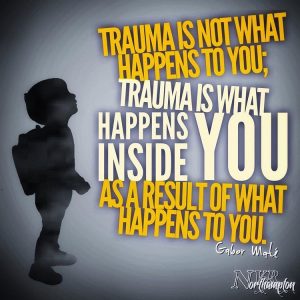 Imagine being able to tell your brain that the traumatic event that haunts you never actually occurred. For many suffering from PTSD, this might sound like an impossible dream. Trauma triggers our Fight, Flight, or Freeze response system automatically. Whether you fought, fled, or froze, you survived the event, but your brain remembers it. This memory starts “wallpapering” your mind with the trauma, making you hyper-alert to any possible threats similar to the traumatic event. While this heightened alertness is meant to protect you from future danger, it can create a minefield of triggers, making everyday life challenging. But what if there was a way to hack the brain’s emotional center, the amygdala, and turn off the alarm system that PTSD sets off?
Imagine being able to tell your brain that the traumatic event that haunts you never actually occurred. For many suffering from PTSD, this might sound like an impossible dream. Trauma triggers our Fight, Flight, or Freeze response system automatically. Whether you fought, fled, or froze, you survived the event, but your brain remembers it. This memory starts “wallpapering” your mind with the trauma, making you hyper-alert to any possible threats similar to the traumatic event. While this heightened alertness is meant to protect you from future danger, it can create a minefield of triggers, making everyday life challenging. But what if there was a way to hack the brain’s emotional center, the amygdala, and turn off the alarm system that PTSD sets off?
Introducing the Trauma Resiliency Protocol (TRP). This innovative approach allows individuals to address their PTSD without recounting their traumatic experiences. In a TRP session, you don’t need to share any details about your trauma with the therapist or coach. Instead, you simply identify the traumatic event you’d like to work on. The protocol then helps disconnect the traumatic emotional response linked to the amygdala and the memory center. Essentially, once the amygdala understands there’s no longer a threat, it turns off its alarm system. You’ll remember the traumatic event with all its details, but without the intense emotional responses from the amygdala. Non-traumatic memories record our daily events, and the emotions dissipate, preventing triggers from similar events. TRP is highly effective, and it’s been utilized for various traumas, from early childhood experiences to military combat.
In addition to TRP, there’s the Emotions Management Process (EMP) to further address emotions tied to traumatic memories. By integrating TRP and EMP, individuals experience a profound reduction in emotional triggers. They can recall the traumatic event as a normal memory—remembering the details without the intense emotional response.
This combined approach helps neutralize the impact of trauma, providing relief and resilience. Those who undergo TRP and EMP can remember their past without painful triggers, enabling them to move forward with their lives.
If you or someone you know suffers from PTSD, please get in touch with a trained professional in TRP and EMP. PTSD can be addressed effectively, not necessarily with drugs, although they can help with various symptoms associated with trauma. TRP and EMP can resolve the troubling emotions connected to the event. I would be glad to discuss how TRP and EMP might be able to help you resolve your traumatic events once and for all.

